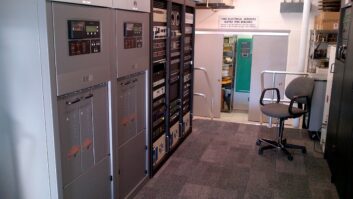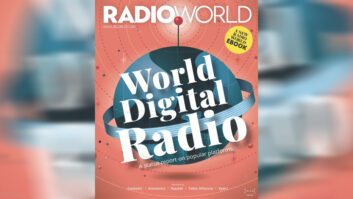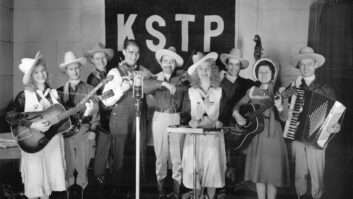For radio station managers considering joining the ranks of the 1,100 U.S. stations already broadcasting in HD Radio, NAB2007 has a lot to offer.
During the three-day Radio Management Conference, NAB2007 presenters will provide the blueprints for constructing a 21st century radio station. Dubbed “Radio at Work,” the conference runs April 15–17.
The conference sessions will show attendees how to get the most from a radio enterprise using the latest in broadcasting products. Guest speakers and panelists will do just that: take the technology from the exhibit floor and show attendees how to make it work for them.
HD REVOLUTION
The basics of getting HD Radio up and running will be the focus of the Monday session, “Building an HD Station I: From Studio to Antenna to the Bank.” It will feature do-it-yourself training on HD Radio licensing, equipment (including where to buy it), budgeting and financial advice. The session will include checklists and shopping lists for all members of a station’s management and engineering team.
On Tuesday, the follow-up session “Building an HD Station II: Programming to Marketing and Beyond,” will focus on the nitty gritty of programming and multicasting and include information on marketing tools available now for stations to use.
Calling HD Radio one of the biggest revolutions ever to hit radio broadcasting, NAB spokesman Kris Jones said the technology allows broadcasters to deliver “even greater sound quality” while adding diversity to their musical offerings.
“HD is going to give broadcasters opportunities to tailor secondary channels to meet the needs of their community,” he said, noting that listeners are still tuning in to local stations.
“The fact remains that over 180 million people listen to free, local radio every day. Over 260 million people tune in weekly,” Jones said.
PODCAST PROGRAMMING
Another Monday session, “Building a Podcast: Hardware to Software to Staffing,” is tailor-made for those ready to board the podcast bandwagon. It will cover equipment, host sites, time, talent and dollars required to assemble a station’s podcast program.
For station managers wanting to beef up Internet operations, the Tuesday session, “Building a Next Generation Web Site,” will dish up ideas for enhancing the effectiveness of Web pages. It will provide step-by-step instructions — complete with shopping lists — for creating more attractive online offerings. Topics will include audio streaming, bandwidth requirements, copyright issues and strategies to bolster listener usage.
The conference will also address widespread changes in listener habits, advertising dollars and profits in the industry. It is an industry, which despite undergoing drastic changes in recent years, is still lucrative in its terrestrial form, Jones said.
“I read a report last month on a study released by the U.S. Census Bureau that said Americans will listen to radio the equivalent of 41 days during 2007. The numbers don’t lie,” he said.
Sessions are slated to look at innovative sales and marketing strategies at a time when traditional radio profits are under pressure from competitive technologies like iPods and satellite radio. The sessions “Money-Making Promotions for Every Size Market,” “Finding Your Next Sales Superstars — Recruiting, Hiring and Training Outstanding Performers,” and “The Next Great Radio Revenue Sources – Building Sales Beyond Just Spots” will be full of ideas for getting the most from advertising spending.
Speakers for the Radio Management Conference sessions have not been finalized, Jones said. However, a few notables are on the books already: CNET.com Editor at Large Brian Cooley will deliver the keynote address at the Radio Luncheon on Tuesday, and famed DJ Rick Dees will be inducted into the NAB Broadcasting Hall of Fame at the same luncheon.







